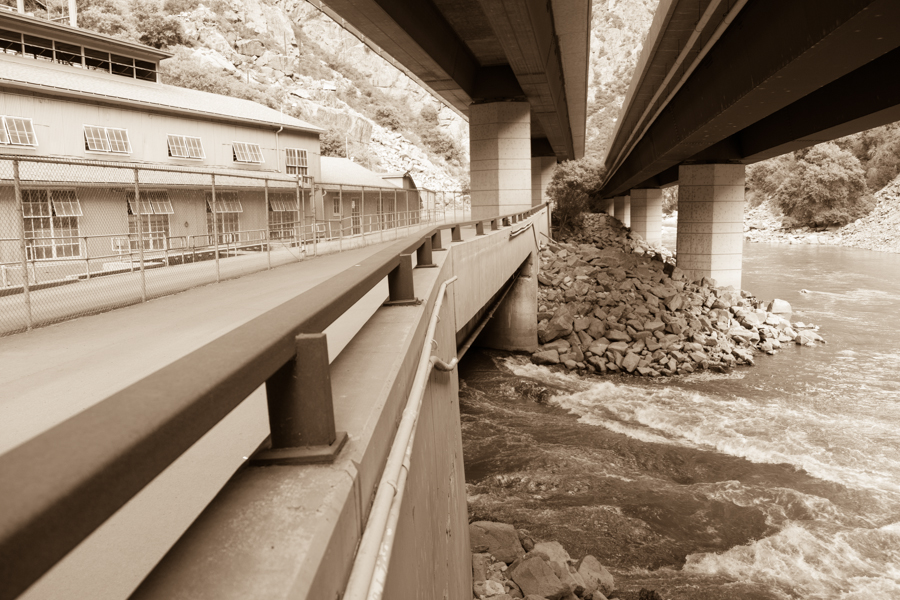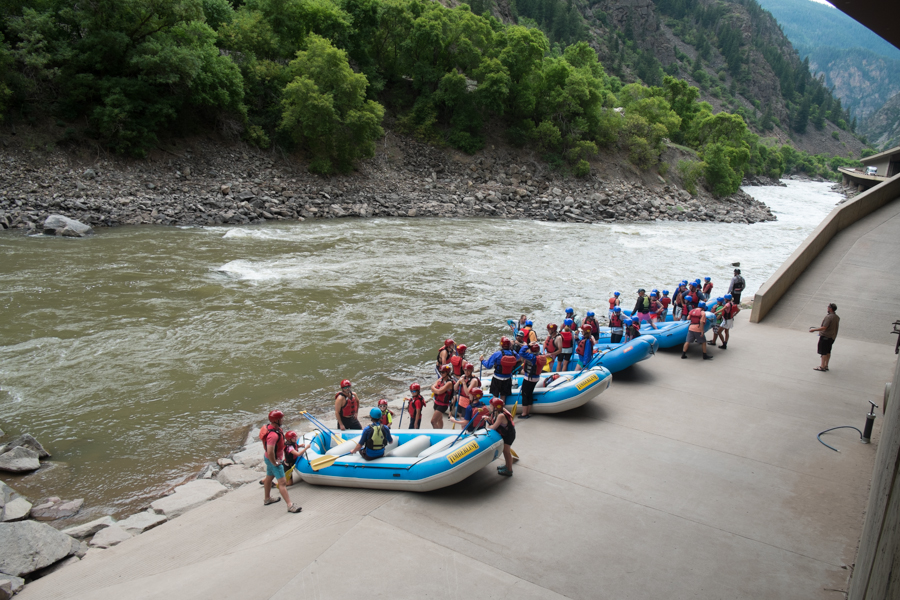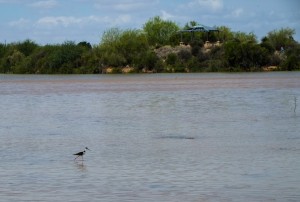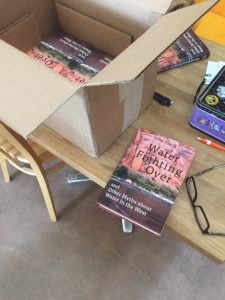
Shoshone power plant, Glenwood Canyon, Colorado River
On what is apparently Colorado River Day (who decides such things?) I made a little pilgrimage this afternoon to see the Shoshone hydro plant, just up river from the little town of Glenwood Springs on Colorado’s west slope.
Shoshone has a unique place in the water management of the Colorado River Basin because of western water law’s “doctrine of prior appropriation”, which says that the earliest water users have first dibs on the water in times of scarcity.
Because Shoshone was built in the first decade of the 20th century, its water right predates much upstream water use, including transmountain diversions that take water from the west slope and ship it across the continental divide for use in Colorado’s populous front range communities of the Denver corridor.
As water gets low in the summer months, those upstream users have to shut down their diversions to ensure that there is enough water in the Colorado River for Shoshone to keep generating power. But here’s the cool thing, which makes Shoshone so interesting – it’s not a consumptive water right. Shoshone “uses” the water to generate electricity, then passes it along downstream. It’s not used up.
Which means that recreational and environmental values downstream of the plant are actually enhanced by Shoshone’s “use” of water, keeping more water in the Colorado River. From an analysis by Joe Reiter, Lauren Ris, and Doug Kenney:
One of the major beneficiaries of this arrangement is the environment. The Colorado River is home to four endangered fish species: Humpback Chub, Pikeminnow, Razorback Sucker, and Bonytail…. The Shoshone water right helps meet the flow targets needed to maintain native fish habitat set by the Upper Colorado River Endangered Fish Recovery Program, a coalition of federal, state and private organizations within Colorado, Utah, and Wyoming. It also, inadvertently, supports a successful rafting industry in Glenwood Springs. Approximately one dozen rafting outfitters operate on the Colorado River in Glenwood Canyon accounting for 72,000 trips a year and $2 million in direct revenue. Individuals make 50,000 private trips per year on the same stretch of river.
The rafters were out in force when I stopped by this afternoon, literally putting in immediately downstream from the Shoshone outfall:

rafters at Shoshone
Happy Colorado River Day.





